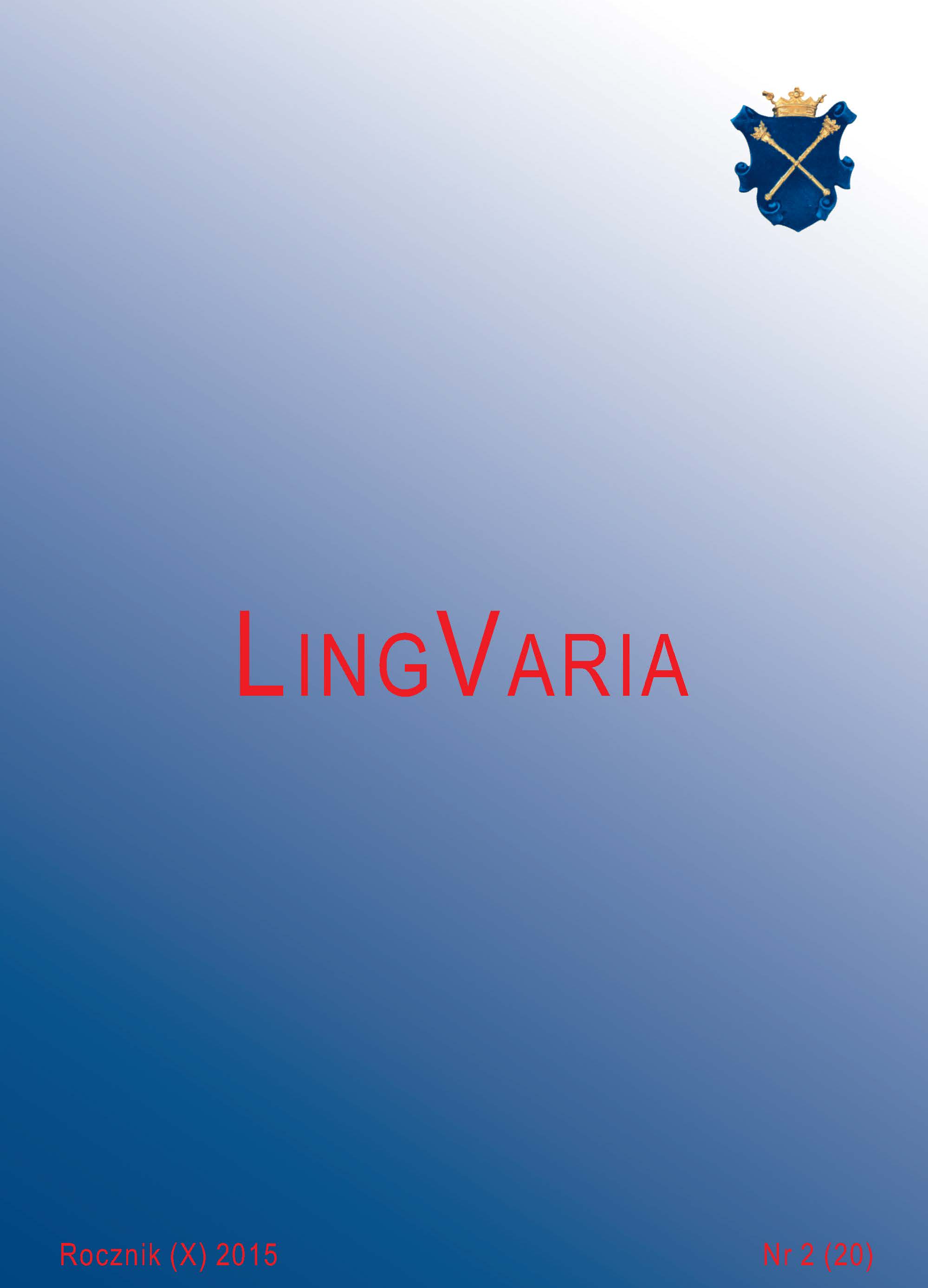Zasób leksykalny obcojęzycznych użytkowników polszczyzny w świetle badań ilościowych
DOI:
https://doi.org/10.12797/LV.10.2015.20.07Słowa kluczowe:
kompetencja leksykalna, wskaźniki bogactwa leksykalnego, profil leksykalny wypowiedzi, uczący się języka polskiegoAbstrakt
Assessing lexical resources of Polish language learners using lexical frequency profile
Polish is learnt by two types of learners; namely, heritage language learners (HLLs) and foreign language learners (FLLs). HLLs are of Polish origin and have gained their partial knowledge of language in a natural environment unlike FLLs who learn Polish in a formal institutional setting and have no Polish roots whatsoever. Lexical resources of HLLs and FLLs and their access to mental lexicon language data, even when their overall level of language proficiency is similar, seem to differ. HLLs speak more fluently, particularly when talking about everyday matters, and their production sounds more native like, being more formulaic. FLLs on the other hand, when speaking, “look for words” with more difficulty and sentences they build often sound odd. The aim of the project is to find out whether the lexical resources of HLLs are really, qualitatively and quantitatively, different to that of FLLs and if so, to what extent. In order to estimate the vocabulary size of the two groups samples of HLLs’ and FLLs’ writing at B2 level were analyzed with the use of various indices such as lexical variation, density, sophistication and Lexical Frequency Profile.
Pobrania
Bibliografia
Cummins J., 1982, Bilingualism and Minority Language Children, Toronto.
Dąbrowska A., Pasieka M., 2006, Błąd językowy – niedostatek kompetencji, luka w sprawności czy niewłaściwa strategia, [w:] A. Seretny, E. Lipińska (red.), Sprawności przede wszystkim, Kraków, s. 15–35.
Edwards R., Collins L., 2011, Lexical frequency profile and Zipf’s law, „Language Learning” nr 61(1), s. 1–30.
ESOKJ: Europejski system opisu kształcenia językowego: uczenie się, nauczanie, ocenianie, Warszawa 2003.
Fishman J., 2001, 300-plus years of heritage language education in the United States, [w:] J.K. Peyton, D.A. Ranard, S. McGinnis (red.), Heritage languages in America: Preserving a national resource, Washington, s. 81–89.
Kamińska-Szmaj I., 1990, Różnice leksykalne między stylami funkcjonalnymi polszczyzny pisanej. Analiza statystyczna na materiale słownika frekwencyjnego, Wrocław.
Kielar-Turska M., 1989, Mowa dziecka. Słowo i tekst, Kraków.
Laufer B., 2005, Lexical frequency profiles: from Monte Carlo to the real world: a response to Meara (2005), „Applied Linguistics” nr 26(4), s. 582–588.
Laufer B., Nation P., 1995, Vocabulary size and use: lexical richness in L2 written production, „Applied Linguistics” nr 16(3), s. 307–322.
Lipińska E., Seretny A., 2012a, Między językiem ojczystym a obcym. Nauczanie i uczenie się języka odziedziczonego w chicagowskiej diasporze polonijnej, Kraków.
Lipińska E., Seretny A., 2012b, Uczący się języka polskiego jako obcego/drugiego w środowisku endolingwalnym – ich umiejętności i potrzeby, „Kwartalnik Polonicum” nr 12(1), s. 2–10.
Meara P., 2005, Lexical frequency profiles: a Monte Carlo analysis, „Applied Linguistics” nr 26(1), s. 32–47.
Miodunka W., 2003, Bilingwizm polsko-portugalski w Brazylii, Kraków.
Montrul S., 2008, Second language acquisition welcomes the heritage language learner: opportunities of a new field, „Second Language Research” nr 24(4), s. 487–506.
Nation I.S.P., 2001, Learning Vocabulary in Another Language, Cambridge.
O’Loughlin K., Lexical density in candidate output on direct and semi-direct versions of an oral proficiency test, „Language Testing” nr 12, s. 217-237.
Pisarek W., 1972, Frekwencja wyrazów w prasie. Wiadomości – komentarze – reportaże, Kraków.
Polinsky M., Kagan O., 2007, Heritage languages: in the “wild” and in the classroom, „Compass of Language and Linguistics” nr 1(5), s. 368–395.
Read J., 2000, Assessing Vocabulary, Cambridge.
Richards J., 1976, The role of vocabulary teaching, „TESOL Quaterly” nr 1, s. 77–89.
Seretny A., 2011, Kompetencja leksykalna uczących się języka polskiego jako obcego w świetle badań ilościowych, Kraków.
Sinclaire J., 1991, Corpus, Concordance, Collocation, Oxford.
Tse L., 2002, Heritage language literacy: A study of U.S. biliterates, „Language, Culture, and Curriculum” nr 14, s. 256–268.
Valdés G., 1997, The teaching of Spanish to bilingual Spanish-speaking students: Outstanding issues and unanswered questions, [w:] M.C. Colombi, F.X. Alarcón (red.), La Enseñanza del Español a Hispanohablantes, Boston, s. 93–101.
Valdés G., 2000, The teaching of heritage languages: An introduction for Slavic-teaching professionals, [w:] O. Kagan, B. Rifkin (red.), Teaching and Learning Slavic Languages and Cultures, Bloomington, s. 375–403.
Vermeer A., 2004, The relation between lexical richness and vocabulary size in Dutch L1 and L2 Children, [w:] P. Bogaards, B. Laufer (red.), Vocabulary in a Second Language, Amsterdam–Philadelphia, s. 173–190.
Zgółkowa H., 1983, Ilościowa charakterystyka polszczyzny, „Studia Polonistyczne” nr 10, s. 163–175.
Pobrania
Opublikowane
Numer
Dział
Licencja

Utwór dostępny jest na licencji Creative Commons Uznanie autorstwa – Użycie niekomercyjne – Bez utworów zależnych 4.0 Międzynarodowe.






